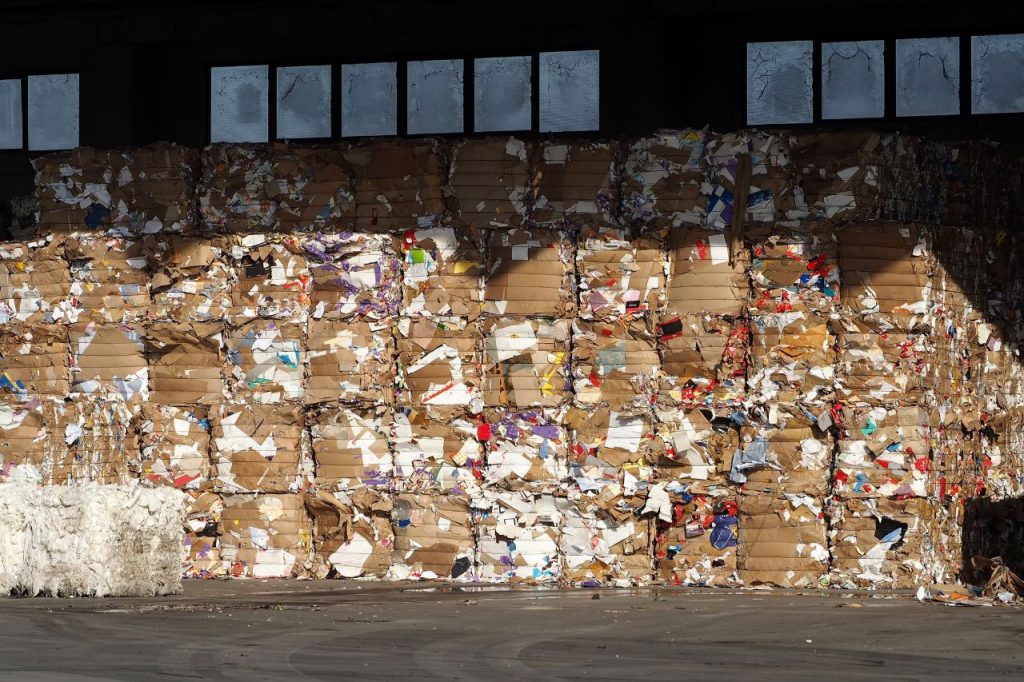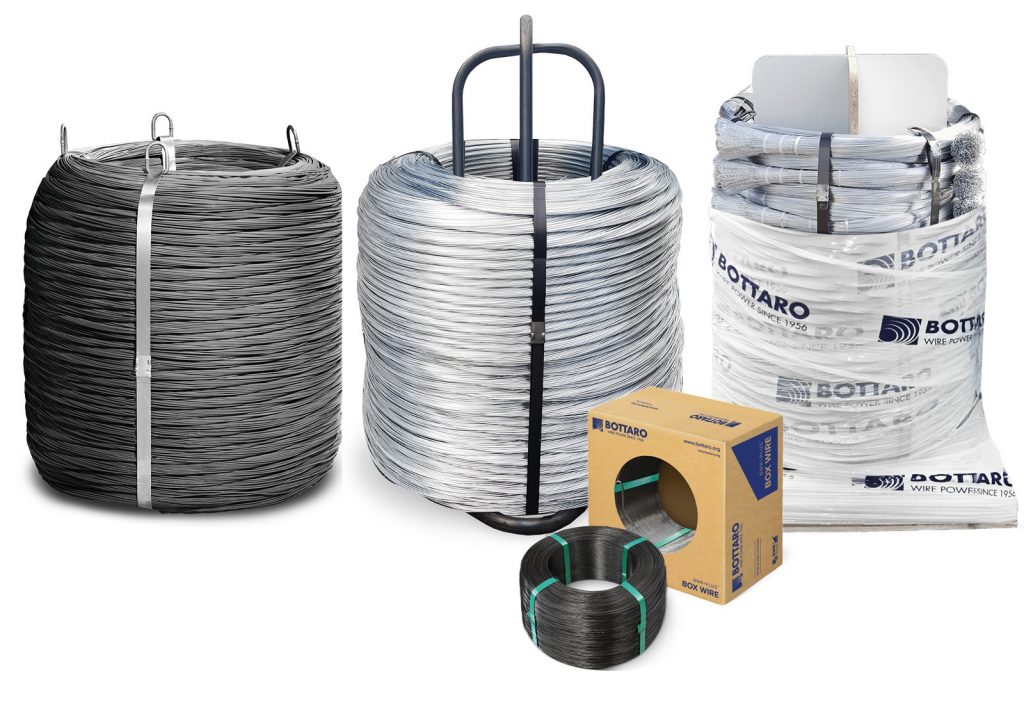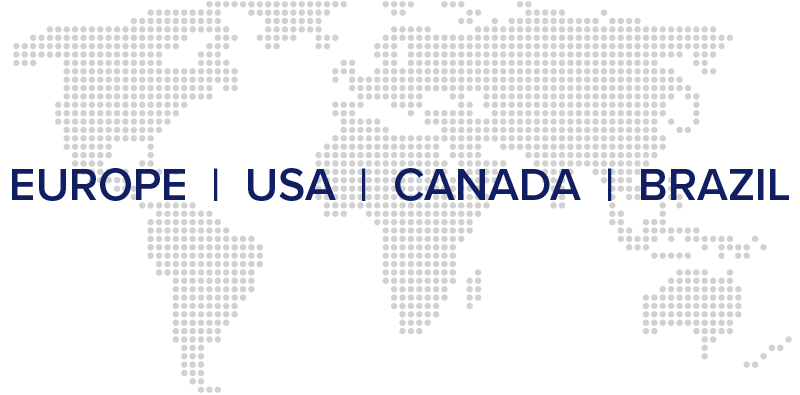Bottaro’s contribution to the paper and cardboard recycling chain
It is a fundamental sector for the planet, one of the few in which large industries and individuals combine forces, efforts and commitment. The goal? To make the paper and cardboard recycling chain an increasingly perfect example of circular economy. How does Bottaro intervene on this path? By providing recycling plants, which use baling presses, with a better performing and more sustainable wire that optimises the entire operational process.

In this article we will discuss:
- Paper and cardboard: the ideal recycling chain
- Recycling which makes a difference: the circular paper path
- Paper and cardboard recycling: where Bottaro steps in
- BWR™: the wire that improves performances
- BRW Black Plus™: the wire for large-scale recyclers
- Bottaro: technology at the service of all
Paper and cardboard: the ideal chain for recycling
The figures speak for themselves: the paper industry is a perfect example of a circular economy.
57% of all paper produced is reused to create new biomaterial. We are talking about over 5 million tonnes (2019 figures) of paper and cardboard recycled yearly.
A sector that includes manufacturers of paper, cardboard and pulp for paper, the graphics and paper and cardboard processing industry, printers of flexible packaging, manufacturers of machinery for graphics and paper processing and salvage operators, in Italy amounts to more than 175,000 workers to which we must add every single citizen who, in his or her private household, recycles these materials.
Although circular, the recycling of paper and cardboard is in reality a complex pathway, which involves the intervention of numerous public and private entities, all of which are indispensable for bringing this process full circle.

Recycling that makes a difference: the circular paper path
The closed circuit, traversed by a simple sheet of paper, is therefore composed of precise stages which, for the sake of convenience, will start from our domestic dustbin. It is here that every single individual performs that first gesture, which is crucial for successful recycling: by separating paper and cardboard waste from the other commonly used materials.
Just as with private individuals, companies obviously also do this by encouraging their employees to correctly sort and dispose of internally produced waste. And in this situation, there are contexts in which recycling takes on truly considerable proportions: the most typical case is large-scale retail, which produces a significant amount of cardboard packaging, used previously to contain the products we see on shelves every day.
Whether sorting starts with individuals or small and large companies, the ball is then passed to municipalities and private operators, who organise the public service of collecting and transporting paper and cardboard to recycling facilities. In these facilities, residual impurities (staples, tape and other materials) are eliminated and paper waste is transformed into secondary raw material, ready to be fed back into the production process.
Subsequent processing then takes place at the paper mill, where the material is pulped, pressed and regrouped on new reels, which in turn can be processed by the paper industry into new packaging.
It is precisely in this department, that of packaging, that the recycling rate in 2019 reached 81% of the amount placed on the market for consumption, a figure that well surpasses the goal of 75% set for 2025 by the new European directive and, indeed, already approaching the goal of 85%, set for 2030.
But let’s go back to the paper journey, because the next step in the chain leads directly from packaging to the act of purchasing, consuming and, once more, the proper separation of paper and cardboard waste carried out by private citizens.
The process, as we said, comes full circle and starts back up again!
Paper and cardboard recycling: where Bottaro steps in
Within this enormous mechanism destined to paper and cardboard recycling, there are of course other players from different sectors who, in one way or another, have the opportunity to contribute to the chain’s sustainability.
One of these players is Bottaro, which, by producing wire, in a specific moment joins the paper and cardboard supply chain: the moment when recycling plants use their baling presses.
The tight bond between Bottaro and recycling plants has enabled the company to get to know and even anticipate the needs of recyclers, understanding, for example, that it is essential for them to use efficient plants able to respond promptly to market demands.
The need that must be met is to try to increase productivity during working hours, while lowering operating costs and relative consumption as much as possible. Just consider that the greatest expenses for recycling plants are those related to purchasing a baling press, its maintenance and operating costs such as electricity and the personnel required to operate it. But if little can be done in terms of savings on purchasing, it is on the other two components that the company can act, precisely with the help of Bottaro and its wire.
The question a recycling company should ask itself, then, is: how do I know if the wire I’m using is the right one?
A legitimate question, due to the fact that, over time, technologies and products change, improve and perform better than in the past. 20 years ago, a 2 m x 1 m bale of wire weighed 1000 kg, while today more wire can be obtained with the same surface area. How is this possible? For example, thanks to machinery capable of compacting the wire more tightly.


BWR™: the wire that improves performances
Another advantage that Bottaro wire brings to these recycling plants can be found in terms of lower energy consumption.
In fact, electrical power consumption also depends on the quality of the material with which the wire is made: to be optimal, there can be no breakage and it must not be problematic when being unwound under the press.
Otherwise, one would need to stop the press, carry out the necessary maintenance and restart it, which would result directly in higher power consumption and higher costs. It is precisely the maintenance costs of a press that represent a dual problem: not only does stopping production and restarting it involve higher energy consumption, but the environment is also affected in other ways. The parts of the press that must be replaced automatically become waste that cannot be recycled.
By creating BWR™ (Bottaro Wire Recycling™) wire, the company has satisfied both criteria, optimising the method of winding the wire so that it not only improves its subsequent unwinding once under the press, but making sure the wire does not break as well.
This, as previously mentioned, has helped customers streamline the daily use of recycling facilities, reducing power consumption and, consequently, the resulting pollution. This way, recycling paper and cardboard is not only green because it recycles, but also because it recycles sustainably.
Improving the performance of this wire, for Bottaro, has meant optimising, in turn, every part of the production process in order to achieve unique mechanical characteristics, superior to other wires. These include maximum resistance to breakage, greater malleability with the same tensile strength, and the possibility of using it on any type of press.
The mechanical properties, combined with an even smoother wire surface compared to previous products, create less friction during use – especially during the binding phase – leading to a further reduction in the recycling plant’s power consumption.
What’s more, it should be noted that Bottaro uses an organic, non-polluting lubricant for its wires, further improving the product’s environmental impact. For more on this topic, read the article “The Pros and Cons of Lubricated Wire”.
BRW Black Plus™: the wire for large-scale recyclers
BWR Black Plus™ represents an interesting product upgrade, designed for companies with heavy consumption. In fact, it is enjoying great success in both Europe and North America due to its high quality, which gives it superior characteristics compared to the standard BWR™.
This wire, in fact, makes it possible to increase the number of bindings, as it performs better in three respects:
- Its diameter is reduced by 10% compared to the classic BWR™;
- It allows a greater metric development to be obtained;
- It increases mechanical performances.
What is interesting in this regard is the case of a large North American industrial group, a top player in the recycling industry, which agreed to try out BWR Black Plus™ wire. The goal was to reduce the economic impact of the packaging department, precisely by simultaneously reducing the impact of wire and plant maintenance.
Result: BWR Black Plus™ offered a reduction in diameter compared to the previously used wire from 4 mm to 3.7 mm, maintaining and improving the safety margin. What’s more, the customer saved about 20% on the absolute price, and was able to optimise the entire operational process: it went from 12 full loads per year to 10. This led to:
- lower maintenance costs
- less handling of material
- fewer reel changes, as they last longer
- less handling by workers and, therefore, more safety
Bottaro: technology at the service of all
As can be seen, Bottaro’s contribution to the paper and cardboard recycling chain can be decisive for many companies in the field from several points of view: in terms of maintenance costs, energy consumption and employee safety.
Bottaro once again places its technology and products at the service not only of its customers, catering to their most practical and operational needs, but also at the service of the environment and, ultimately, of all of us, with solutions and investments always aimed at improving performances linked to the sustainability of its products.
A contribution that becomes even more indispensable because the path of quality that Bottaro has embarked on has found the support of trade associations – such as Federec (FR), BVSE (DEU), VSMR(CH), VBS (CH), Swana (USA) and ISRI (USA) – and numerous small, medium and large companies all over the world.
In recent years, these companies have opted for Bottaro wire, bringing together the values of environmental ethics and sustainability that are indisputable elements of the company’s DNA.
© Copyright Bottaro Mario S.r.l. - All rights reserved

